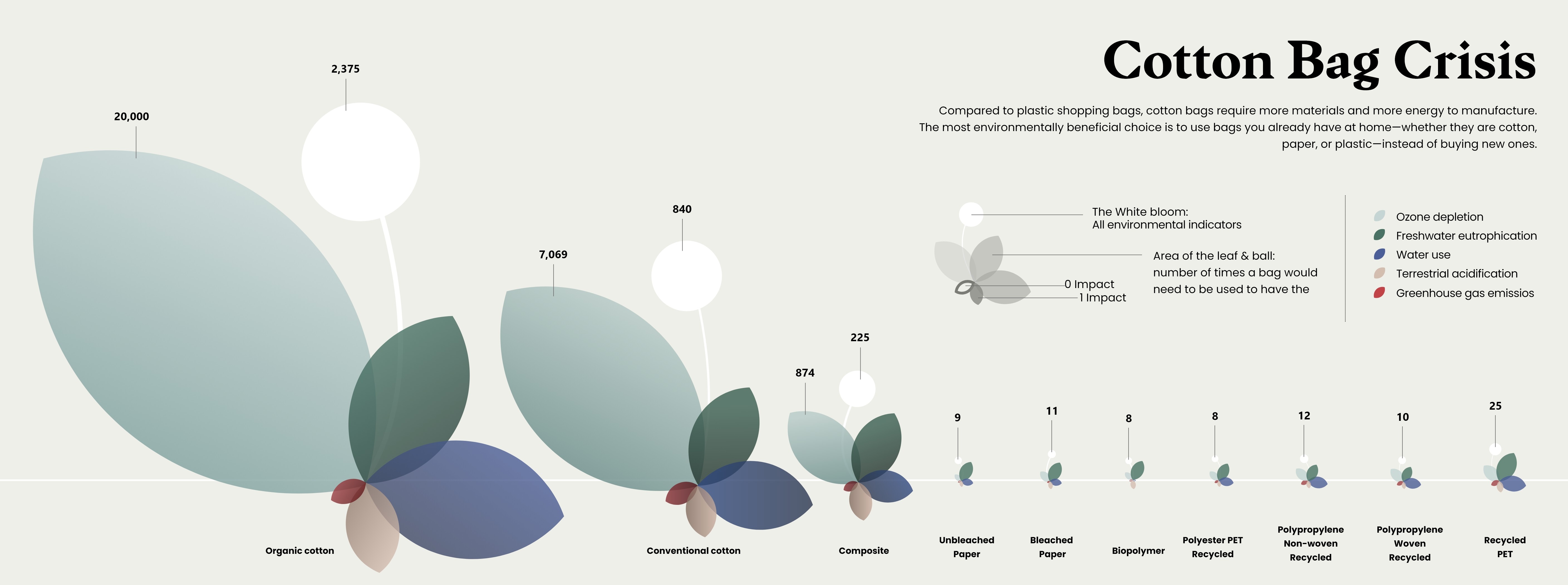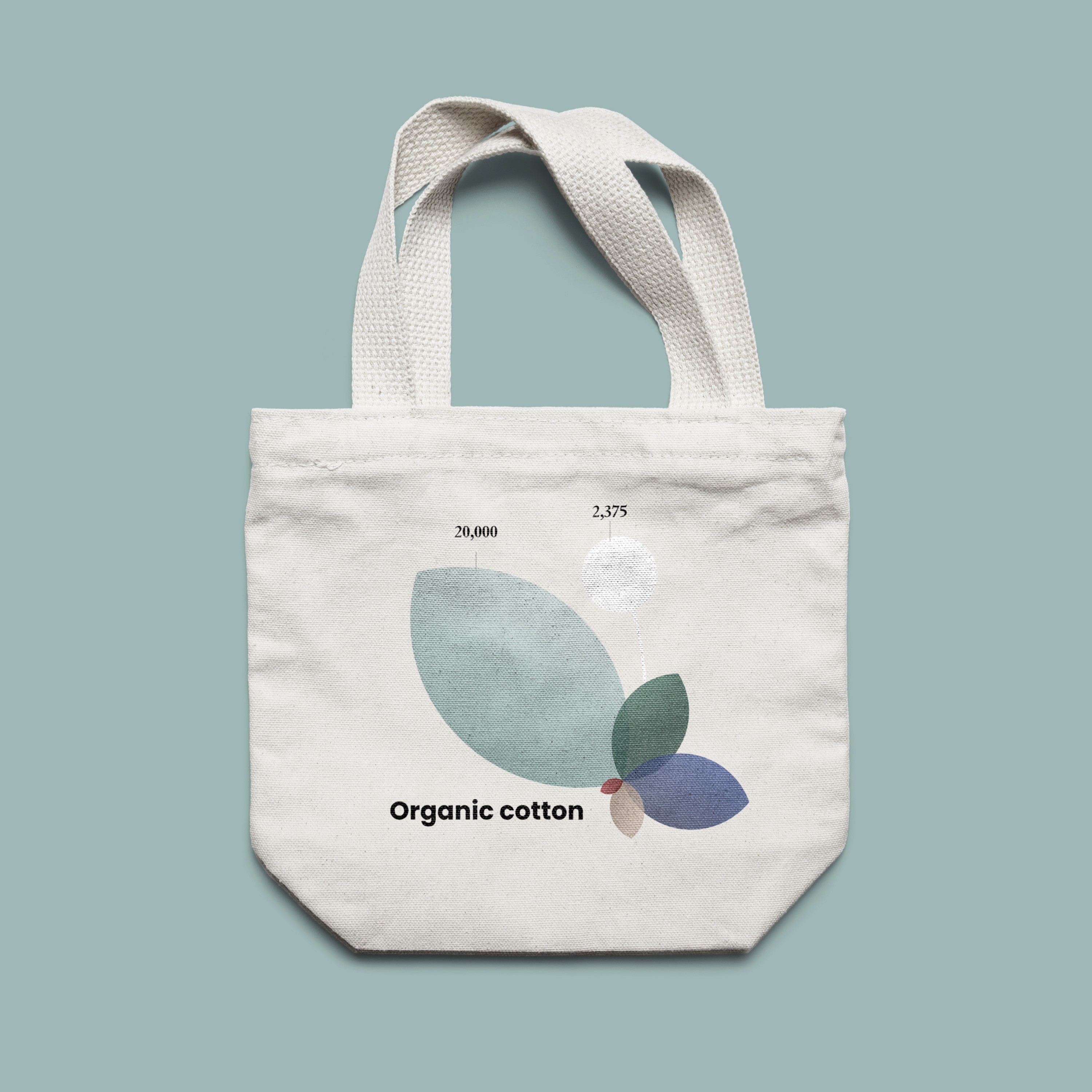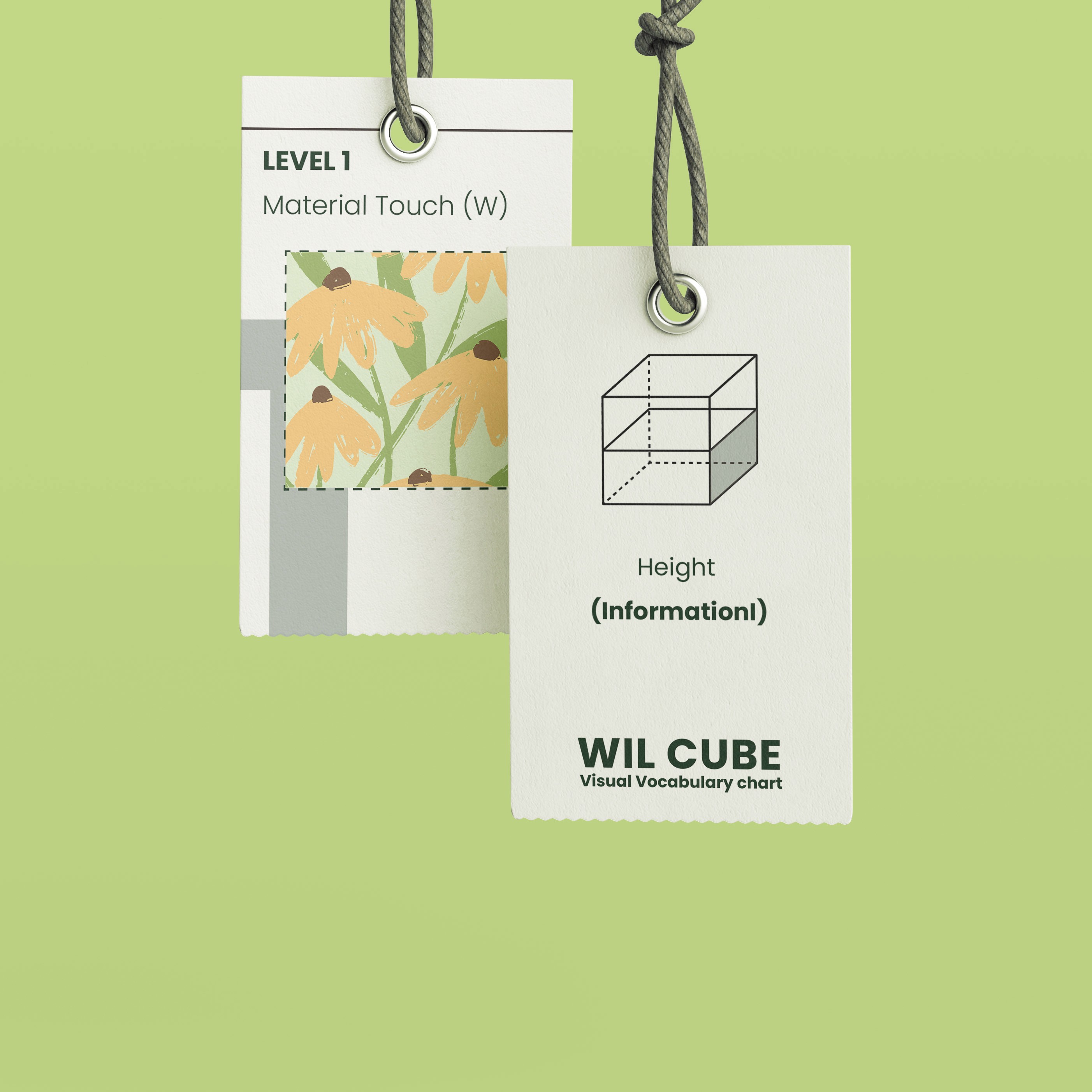Cotton Bag Crisis
intro
Although cotton bags are often considered environmentally friendly alternatives, they may not be as eco-friendly as commonly believed. The process of growing cotton requires a large amount of water and pesticides, and the production process also consumes significant energy. From planting and harvesting to processing, each step is accompanied by high carbon emissions.
To better understand the environmental differences between cotton bags and other materials, I drew inspiration from the shape of cotton to visualize this comparison. By contrasting data on different materials, I aimed to reveal the significant environmental impact differences among various materials.
The data primarily comes from the Danish Environmental Protection Agency's "Life Cycle Assessment of grocery carrier bags" report, which provides a detailed analysis of the entire lifecycle of various shopping bags from production to disposal. Additional data from other sources were also referenced to ensure the comprehensiveness and accuracy of the comparison.
WHAT I DID
Data Visualization, Illustration, Print, Poster
Year
2023

Process
Problems and Challenges
The statistical values of different materials vary greatly, making it difficult to display these data on the same chart at a reasonable scale.
Solution
By visualizing the raw numbers, the transformed graphics can intuitively show the comparison between the data within a reasonable range. This allows the audience to visually compare the areas, making it easier to understand the data.
Inspiration
The design draws inspiration primarily from the shape of cotton, hinting at the origin of cotton bags. Colors were extracted from the actual phenomena corresponding to the environmental impacts of different materials, forming the basic visual impression for the visualization.
OUTCOME







